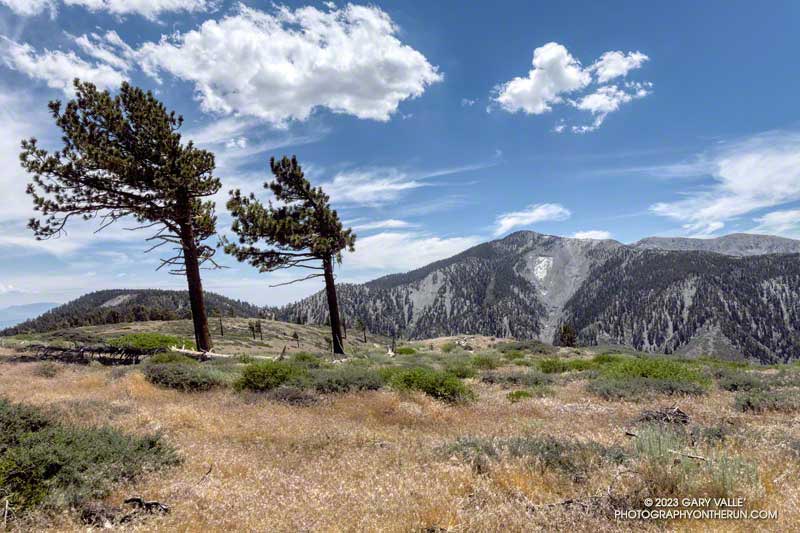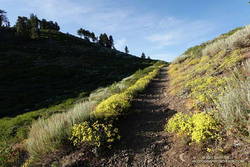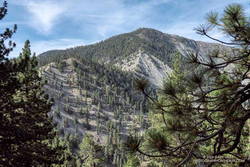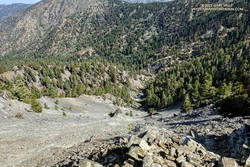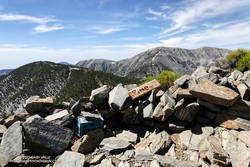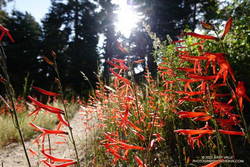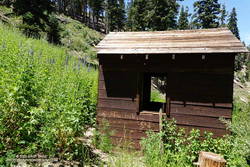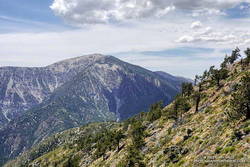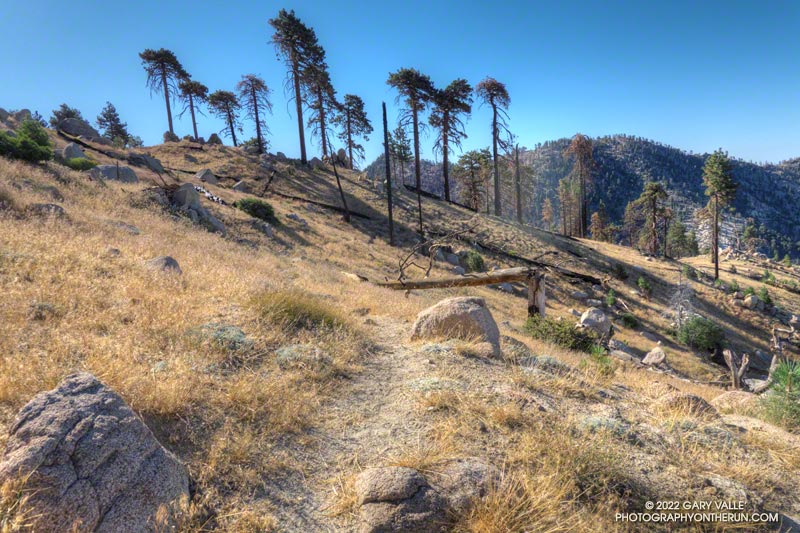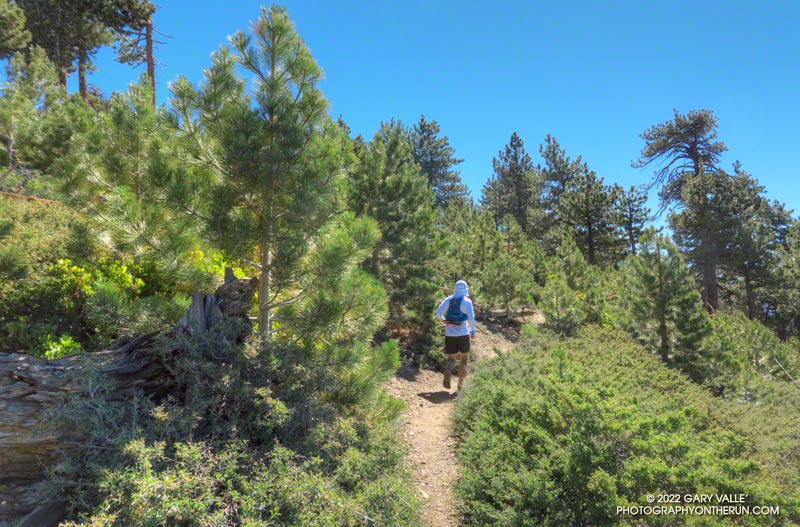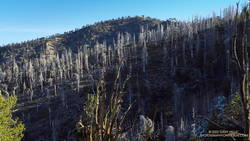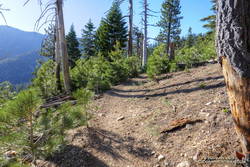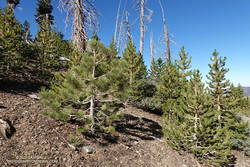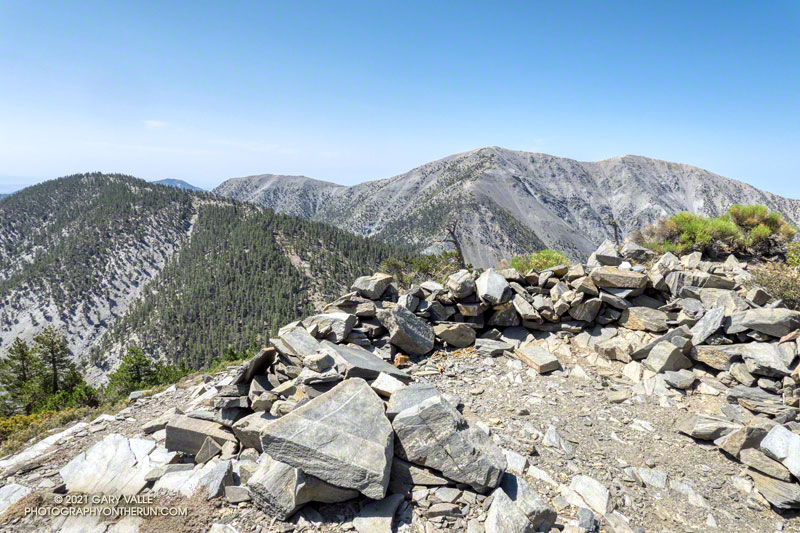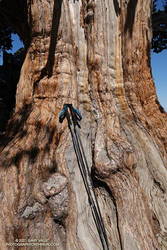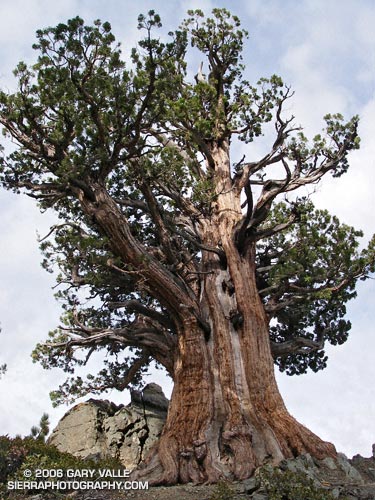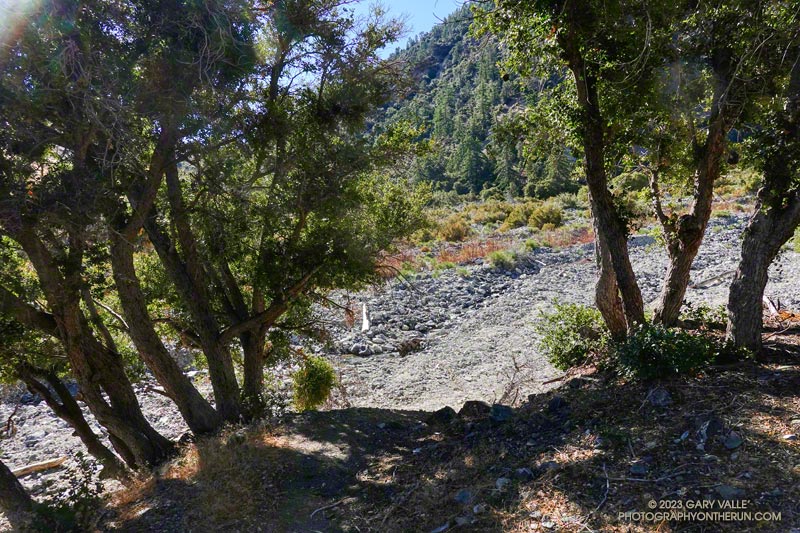
Update September 3, 2023, 1:15 p.m. Caltrans Quickmap is showing Angeles Crest Highway (Hwy 2) is now open between Grassy Hollow and Vincent Gap. Caltrans Road Conditions says the closure is “5 mi west of Big Pines.” Google Maps and Waze still show the section between Grassy Hollow and Vincent Gap as closed.
Update August 23, 2023. The Big Pines RAWS recorded 6.26 inches of rain, and Lewis Ranch RAWS 7.04 inches from T.S. Hilary. The heavy rain on the north-facing slopes of the eastern San Gabriels may have produced debris flows in the washes crossed by the Manzanita Trail. Excessive runoff may have done more damage to stabilized sections of the Manzanita Trail where it crosses steep slides above Paradise Springs. According to CalTrans, the previously open section of Angeles Crest Highway (Hwy 2) between Grassy Hollow and Vincent Gap is currently closed.
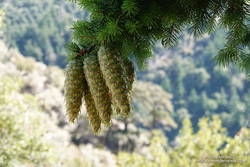
I’d been thinking about doing the South Fork Loop, a challenging loop that I usually start at Islip Saddle. The route descends the South Fork Trail to South Fork Campground (4,565′) and then climbs all the way to the top of Mt. Baden-Powell (9,399′), using the Manzanita Trail and PCT. From the top of Baden-Powell, the PCT is followed back to Islip Saddle.
But there were a couple of problems with this idea. First, the road to Islip Saddle — Angeles Crest Highway — was closed. More importantly, parts of the South Fork Trail were burned in the Bobcat Fire, and heavy snow and rain may have damaged the South Fork Trail or Manzanita Trail.
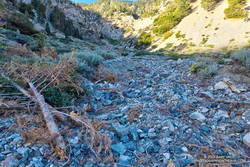
The road closure would be easy to work around — the loop could be started at Vincent Gap. But I definitely needed to check the condition of the South Fork and Manzanita Trails. The loop is difficult, even when the trails are in good shape.
I decided to check the Manzanita Trail first. If that trail had issues, then the condition of the South Fork Trail didn’t matter.
So that is what I was doing today. The plan was to run the Manzanita Trail from Vincent Gap down to South Fork Campground, then turn around and — just like on the South Fork Loop — take the Manzanita Trail and PCT to the top of Mt. Baden-Powell.
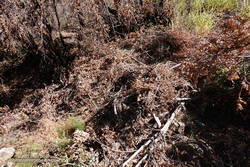
I woke early on Sunday and arrived at Vincent Gap at about 6:45 a.m. With much of Angeles Crest Highway closed, I shouldn’t have been surprised that the main parking lot was already full. I nabbed the last spot in the overflow area across the highway. I could only imagine what it must be like on the trail up Baden-Powell.
But I didn’t have to worry about that — not for a while. I grabbed my pack from the back of the car and started jogging down the Manzanita Trail. On that trail, I probably wouldn’t see anyone!
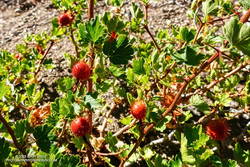
As would be expected on a little-used trail after a hard Winter, the Manzanita Trail was a bit of a mess. In addition to being generally overgrown, there were fallen trees, brush deposited on the trail by runoff or avalanches, minor washouts, and other damage. These slowed the pace but weren’t too much of a problem.
On the other hand, there is a section of the Manzanita Trail that could be a serious issue. It is where the trail crosses several steep, loose, stabilized slides. This area is about 4.4 miles from Vincent Gap and 1.4 miles from South Fork Campground. This section of the trail is almost always damaged, but on past adventures, had always been passable. How bad was it going to be today?
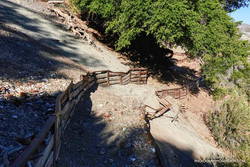
The answer is — pretty bad. As I started across the first slide, it looked like it would go just fine, but then I looked closer. One of the abutments on the down-slope side of the trail had completely given way. The trail had collapsed, leaving only a narrow slice of crumbling dirt along the base of the up-slope barrier. I would have to use the barrier to get past, and it wasn’t in the best shape. I’m sure people have done this, but it seemed like a bad idea. I could see no straightforward way around the collapsed trail. Disappointed, I turned around and started working back up the trail toward Vincent Gap.
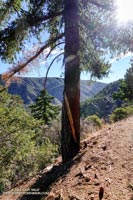
I’d been running for a few minutes when I came across a “lightning tree.” These are trees that have been struck by lightning and have a scar spiraling down their trunk. I’ve photographed a number of them. Some are in a location that you would expect to be struck by lightning, but just as many are along seemingly unexposed sections of trail. Once, I was running down the PCT below Mt. Hawkins, well below the crest, and a tree 50 yards down the slope was smoking from just being struck.
On the way back up to Vincent Gap, there would be a little route-finding fun. The Manzanita Trail crosses some small debris-filled washes. Over time, paths develop through the rubble but can be intermittent and indistinct. Debris flows can destroy a part of nearly all of a path.
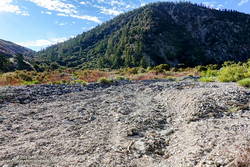
The wash in Dorr Canyon is the largest crossed by the Manzanita Trail. Keeping in mind that Tropical Storm Hilary may have changed things, on August 13th, the path across the wash was mostly intact. One gotcha was that on the west side of the wash, the path ended short of the Manzanita Trail.
Did I mention the gnats, stinging nettle, and Poodle-dog bush? Oh, the gnats. On the way down the trail they weren’t too bad, but as the temperature warmed, they became increasingly annoying and persistent.
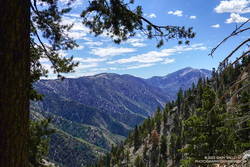
When doing the South Fork Loop, I usually stop for water at the stream that feeds Icy Springs. The trail was overgrown near the stream, and mixed in with the greenery was some stinging nettle. Even knowing it was there, I managed to brush against it on the way down the trail and then again coming back up.
There was also a little Poodle-dog bush on the trail about two miles down from Vincent Gap in a small area that had been burned. As long as you noticed it, it was easy to avoid.
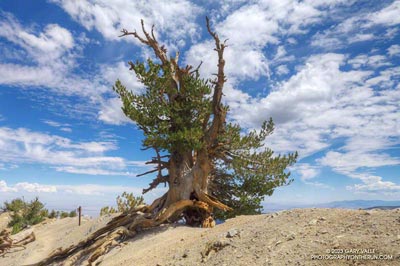
What the heck? As I topped out at Vincent Gap, the sounds of revelry came from across the highway. It was party time in the Baden-Powell parking lot! A large group of people were gathered at the west end of the lot, near the trailhead. Were they preparing to do a mass ascent of Baden-Powell? I quickly refilled my hydration pack, grabbed some food, and headed up the PCT.
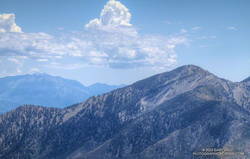
Once I escaped the craziness of the parking lot, it turned out to be one of the most pleasant ascents and descents of Baden-Powell I’ve done. Even with the machinations of the Manzanita Trail earlier in the morning and the additional vertical gain, Baden-Powell couldn’t have gone better. Very few hikers were on the trail, everyone was super-friendly, and when I reached the summit, it was empty — at noon, on a Sunday, in August!
Some related posts: Manzanita Trail Morning, South Fork Adventure, Bear Cubs on the South Fork Trail, San Gabriel Mountains Running Adventure

